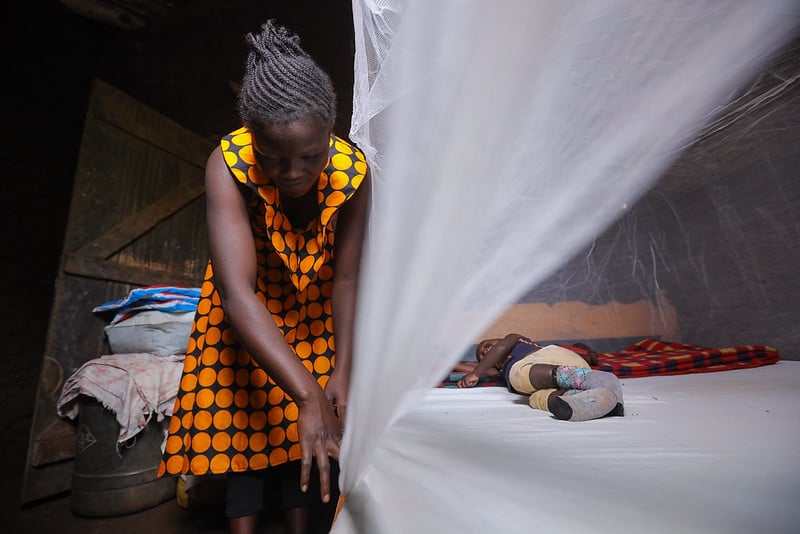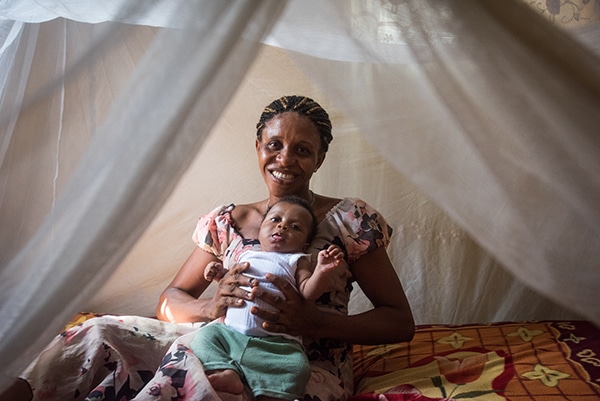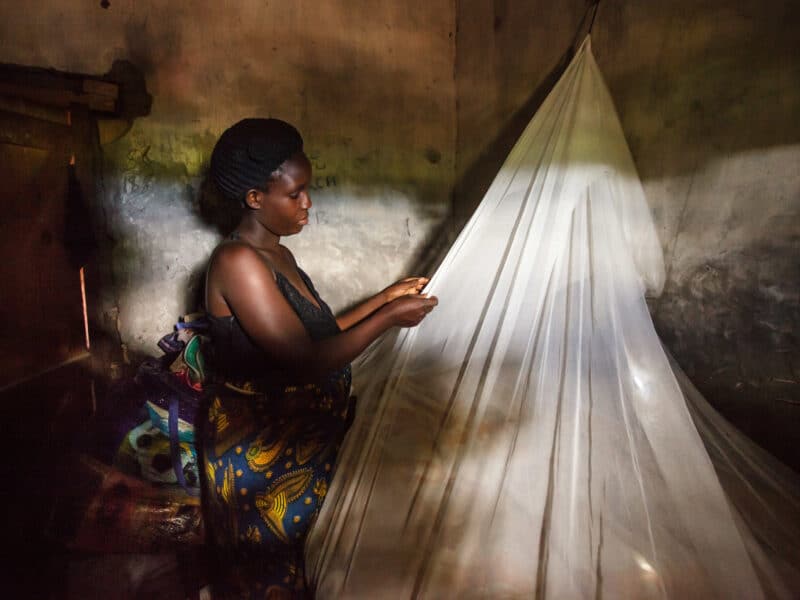In Malawi, young boys from about 5 to 15 are less likely than their family members to sleep with an insecticide-treated bed net designed to protect them from mosquitoes carrying the parasite that causes malaria.
This puts these kids at added risk for the disease that killed 630,000 people around the world in 2020, the majority of whom lived in sub-Saharan Africa. Insecticide-treated bed nets are one of the most effective ways to prevent malaria.
The reason these young boys are unprotected? Researchers believe that when households don’t have enough nets for everyone, it is this age group that is left out. When there aren’t enough nets in a household, pregnant women and young children under 5 get priority because these groups are among the most vulnerable to malaria. Sleeping arrangements change across childhood as children grow older and the lowest priority group for bed nets tends to be kids ages 5 to 15, especially boys.
The answer – according to an interactive database maintained by the Johns Hopkins Center for Communication Programs – is households do not have enough bed nets to protect everyone.
These data are available through the ITN Access and Use Report Interactive Website. The U.S. President’s Malaria Initiative’s VectorWorks project, led by CCP, originally developed the first such report. The online version, now in its fifth year, is updated regularly by Breakthrough ACTION as new data become available.
It’s not just Malawi where kids from 5 to 15 are least likely to sleep under a bed net. The story is repeated across Africa: If there aren’t enough nets, school-aged kids miss out.
“Insufficient numbers of insecticide-treated nets lead to inequity of coverage, often with boys and adolescents most impacted,” says CCP’s Gabrielle Hunter, technical team lead for malaria and Zika for the Breakthrough ACTION project. “But when a family has enough nets, everyone can be protected.”
Using data from the Demographic and Health Surveys, Malaria Indicator Surveys, and Multiple Indicator Cluster Surveys from more than 45 countries across Africa, Asia and the Americas, ITNuse.org presents factors that impact whether someone sleeps under an insecticide-treated net and displays them on an interactive map. The website brings together data from these surveys in a single location to facilitate data use for decision-making. But the true appeal of the ITN Access and Use Report is that it doesn’t just look at behaviors in a vacuum.
“The report takes into consideration a household’s access to enough nets to cover the whole family,” Hunter says, “because people cannot use a net they don’t have.”
Today, this website is the go-to reference for bed net use data by malaria program planners across the globe, helping decision makers determine where nets are needed most – and gain a nuanced understanding of the barriers.
The goal of the interactive website is to help malaria program planners identify groups who are not regularly using bed nets and whether that is because they choose not to or because there simply aren’t enough nets for everyone. Armed with insights about their program’s priority audiences, program planners can design malaria prevention programs that are comprehensive and inclusive.
“In this fight to reach zero malaria, we must ensure that everyone can access the resources they need to protect themselves and their families,” Hunter says.





